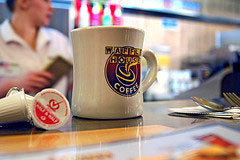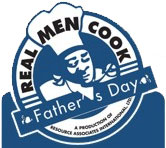A Case Study in Online Public Relations & Crisis Management
Police arrested a 66 year old woman this week for refusing to pay her $7.45 tab at Waffle House. The story got picked up by Drudge Report, then the broader media and finally through blogs and social media networks.
This is not a bona fide PR crisis, but this situation reflects poorly on Waffle House, a national chain with ~1500 stores. Dumb criminals are entertaining, but reports aren’t clear about why she didn’t (couldn’t?) pay. Many bloggers are finding fault with the restaurant and railing against it. [1, 2, 3, 4, 5, 6, Google Blog Search]
The store manager probably should have discreetly waived the bill, although I can’t imagine they thought the situation would be elevated to national attention. Regardless, this is an opportunity for the company to define it’s relational strategies for crisis management and online consumer interaction.
Background: Waffle House Serves a Broad Base
Full disclosure: I love Waffle House. It’s a brand steeped in Diner Americana invoking the hot black coffee retreat painted by Edward Hopper. The all-day-breakfast menu is working class fuel, from pre-dawn to the deep night-shift. It’s the kind of place comfortable memories are made, from roadtrip pitstop adventures to the nighthawk’s final call.

|

|

|

|

|

|
Waffle House is a cultural icon rich in user-generated content. Click images to see Flickr comments. |
||
Waffle House offers simple food, folksy patrons and they have some of the hardiest working & friendliest servers in the industry. Sitting next to the grill line when the place is slammed, the hot sizzle, greasy smells and barking orders is poetic to a business process nerd like me.
Recent Waffle House PR Challenges & Responses
Waffle House has already faced a series of bad press from unruly customers.
- October 2008 Robberies occur in Texas and Alabama. A fatal shooting Florida is met with calls for boycotts online.
- August 2008 LiveLeak has security video of a brawl complete with racist comments about Waffle House customers. The company should nail whoever is releasing these security videos to the public, although methinks it may have been released by plaintiff litigants who obtained them through the course of Discovery. Unfortunately, the damage is done; the company’s best response is being prepared next time.
- March 2008
 Kid Rock pleaded not guilty for fighting in a Waffle House. I love the company’s response: they invited the star back to a restaurant to greet his fans and raise money for a local homeless shelter. Spokesperson Kelly Thrasher explains the company wanted to “take a negative situation and turn it into a positive situation.”
Kid Rock pleaded not guilty for fighting in a Waffle House. I love the company’s response: they invited the star back to a restaurant to greet his fans and raise money for a local homeless shelter. Spokesperson Kelly Thrasher explains the company wanted to “take a negative situation and turn it into a positive situation.”
Waffle House brand managers should proactively apply this positive philosophy to social media. This recent series of events can be the impetus for a cohesive online PR strategy that touts the brand’s long-standing reputation for good customer service.
“When life gives you lemons, make lemonade!”
Grandma
What Should Waffle House Do?
I recommend a deep dive on some of these general actions.
- Develop an Online Persona
One can expect resistance to social media from a brick-and-mortar diner chain, especially one that doesn’t advertise. Traditional PR might consult with Legal and publicly drop all charges. Or partner with local homeless services nonprofits.
However, consumers have already extended the brand across social networks (more on that below). Blue collar audiences are online, 70% use social media and savvy brands are serving them.
Whataburger is a Southern burger chain with a made-to-order heritage that targets men, 50+. It’s ad agency McGarrah-Jessee drives a polished effort online as well as in direct, outdoor and cool broadcast work reminiscent of my favorite down-home man-it-up Miller High Life spots.
We tailored the BecomeAnEX campaign to help multiple shades of blue-collar audiences. We found a majority of our target already online and eagerly embracing mobile technologies. - Engage Existing Communities
My brief research uncovered a bevy of positive stories, pictures, a Wikipedia article and scores of cult-classic sentiments like this unassuming Waffle House Wedding in Georgia that would have been a hoot to crash. Git ‘er done!
The alt.food.waffle-house Usenet group has 6000 members, there are YouTube videos, 1000s of pics on Flickr, large fan groups on Facebook and Ning and constant tweets on Twitter to name a few.
Once brand managers know where people congregate online, they can enter discussions via PR and interactive advertising. I believe an approachable persona mixed in humurous kitsch and classic PR would be very well received in micromedia formats (@woot comes to mind). - Develop Distinct Strategies for Each Platform
Social media outlets are unique and some communities lend themselves to different business objectives (i.e awareness, response, promotion, revenue, feedback channels, etc). Plan accordingly. - Leverage UGC
Integrate user-generated content into Waffle House web properties. - Attach the Brand to a Quirky Holiday
 Waffle House already does this to some extent. They are a sponsor of Real Men Cook, a family celebration event hosted on Father’s Day in Atlanta. Waffle House benefits with buzz marketing, product placement and celebrity endorsement.
Waffle House already does this to some extent. They are a sponsor of Real Men Cook, a family celebration event hosted on Father’s Day in Atlanta. Waffle House benefits with buzz marketing, product placement and celebrity endorsement.
The company also celebrates National Waffle Week and hosts the World Waffle Eating Championship that garners press for it’s high-profile speed eaters.
A cheap Quirky Holiday SEM Strategy could generate local press, elevate presence of mind & uptick sales for a couple days on an otherwise off-beat holiday. Eat What You Want Day [May 11] could be fun given their pick-n-choose menu. Other possibilities: Lips Appreciation Day [Mar 16] and No Housework Day [Apr 7]. - Update the “Newsroom”
I’d wager the Waffle House Newsroom got a lot of hits today with this story. And it hasn’t been updated in over two years. Good media relations is critical. - Web Analytics & PR Measurement
Judging by the state of the site, and the apparent lack of a full-time PR manager, I’d wager executives don’t study inbound traffic sources. At one time, Waffle House partnered with Vocus for on-demand news monitoring and measurement. Hopefully company employs basic online monitoring. - Implement a Brandjacking Defense Posture
These are just the kind of one-off stories that instigate a brandjacking that will probably run it’s course in a few days. Even if this case probably will not hurt the brand long-term, why risk it? It appears @wafflehouse has already been brandjacked on Twitter and on Google’s Blogspot.
Using my Social Media Checklist, Waffle House brand managers should snag social media profiles, even if it doesn’t actually engage followers. - Speak to Security Concerns
Customers need to feel safe. Be open about what security measures the company is taking and address flagrant misstatements when they occur. This requires active and passive online brand monitoring. - New Price Points
I’m not privy to current Waffle House pricing strategies, although, I do remember All You Can Eat deals for $3.99 in college! Brands have to be careful about competing on price when a depressed economy eventually recovers. However, this story got traction because of the economy; people will make a connection on price & this lady being unable to afford $7.45. A temporary high-level plan can hedge against public blowback.
Enterprise Strategies in Social Media
While PR focused on external messaging, Waffle House can use social media for internal infrastructure communications.
- Franchise Communications
A few years ago, I got an internal sneak peak at Schlotzsky’s efforts to shore up internal communication among franchisees during a restructuring phase. I’d keep an eye out for anything that supported franchise relations specifically. - Collaborate On Internet Messaging & Brand Identity
Schlotzsky’s also addressed inconsistencies in external messaging, branding and stores across the franchise system, both in traditional and online advertising. From what I can tell, Waffle House is facing similar challenges today. Even after establishing a strict code of branding guidelines, policing and enforcement requires dedicated resources. - Regional Online Marketing & Domainjacking Avoidance
The lack of an online messaging strategy also puts the brand at risk for domainjacking. Franchises are already grabbing their own domain names, which is common when marketplace planning and legal don’t keep pace with technology.
Waffle House should have a unified front in the WaffleHouse.com domain, improve the store locator & offer marketing pages for franchise owners so they can leverage the brand for local promotion. Following this, the company can develop strategies for regional online marketing & mitigate the risk of domainjacking.
Is this case study helpful? What would you suggest to Waffle House executives? Please share your thoughts below!
 Fortunately, we responded so quickly that the brand ultimately only suffered mere annoyance. Working through cease and desist letters, we procured the rapid cooperation of the squatter’s registrar and hosting company. We reclaimed rightful domain ownership and even enjoyed brief AdSense exposure at the squatter’s expense.
Fortunately, we responded so quickly that the brand ultimately only suffered mere annoyance. Working through cease and desist letters, we procured the rapid cooperation of the squatter’s registrar and hosting company. We reclaimed rightful domain ownership and even enjoyed brief AdSense exposure at the squatter’s expense.